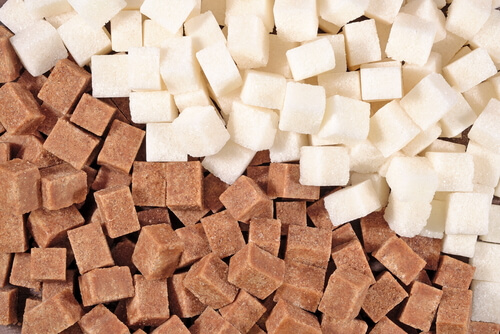When considering beet sugar vs cane sugar, some prefer one for baking while others favor the alternative.
When considering beet sugar vs cane sugar, some prefer one for baking while others favor the alternative.
Blog Article
Discover the Uses and Advantages of Beet Sugar Vs Cane Sugar in Your Daily Diet
Exploring the distinct top qualities of beet and cane sugar discloses more than just their sweetening capabilities; it highlights their one-of-a-kind influences on health and wellness and cooking arts. Beet sugar, recognized for its subtle taste, is typically preferred in fragile desserts, whereas cane sugar, with its hint of molasses, includes splendor to durable meals. Each kind holds its very own nutritional account and glycemic implications, welcoming a deeper understanding of their duties in a balanced diet regimen and sustainable consumption techniques.
Origin and Production Procedures of Beet and Cane Sugar

The distinct climates and dirt kinds required for growing sugar beets and sugarcane add to differences in their cultivation methods and geographical circulation, influencing the business economics and sustainability of their manufacturing. beet sugar vs cane sugar.
Nutritional Comparison In Between Beet Sugar and Cane Sugar
In spite of stemming from various plants, beet sugar and cane sugar are nutritionally very similar, both mainly consisting of sucrose. Each offers regarding 4 calories per gram, equating to approximately 16 calories per tsp. Structurally, both sugars are made up of about 99.95% sucrose, with marginal quantities of various other materials like dampness and trace element, which do not significantly alter their nutritional profiles.

Inevitably, when choosing between beet sugar and cane sugar based on dietary material alone, both deal identical advantages and drawbacks as they are essentially kinds of the same particle-- sucrose, providing fast power without other nutrients.
Effect On Health And Wellness: Glycemic Index and Caloric Content
Exploring additionally into the effects of beet sugar and cane sugar on health and wellness, it is very internet important to consider their glycemic index and calorie content. Both sugars are identified as sucrose, which contains sugar and fructose. This composition leads them to have a similar influence on blood glucose degrees. The glycemic index (GI) of both beet and cane sugar is around 65, classifying them as high-GI foods, which can create quick spikes in blood glucose levels. This is an essential facet for people handling diabetic issues or those trying to stabilize their energy levels throughout the day.
Each kind of sugar contains around 4 calories per gram, making their caloric content matching. For those checking calorie consumption, particularly when managing weight or metabolic health problems, comprehending this equivalence is crucial (beet sugar vs cane sugar). Excessive usage of any kind of high-calorie, high-GI food can contribute to wellness problems such as obesity, heart condition, and insulin resistance.
Environmental and Economic Considerations of Sugar Manufacturing
Beyond wellness impacts, the production of beet and cane sugar additionally raises significant environmental and economic concerns. Sugar beet farming often tends to require cooler environments and has a lower geographical impact official site contrasted to sugar cane, which thrives in tropical regions. Nevertheless, both plants are extensive in regards to water usage and land occupation, potentially causing logging and water deficiency. Financially, the worldwide sugar market is very unpredictable, affected by adjustments in international trade policies click resources and aids. Many countries incentivize sugar production with financial backing, skewing market value and impacting small farmers adversely.
Additionally, the use of pesticides and fertilizers in both beet and cane sugar cultivation can lead to dirt destruction and air pollution, more affecting biodiversity and regional water bodies (beet sugar vs cane sugar). The option between cultivating sugar beet or cane often rests on neighborhood ecological problems and financial variables, making the sustainability of sugar production a complicated problem
Culinary Applications and Taste Distinctions
While the environmental and financial facets of sugar production are undoubtedly considerable, the choice between beet and cane sugar additionally influences culinary applications and taste profiles. Beet sugar, acquired from the sugar beet plant, is understood for its incredibly neutral taste.
Cane sugar, removed from sugarcane, usually preserves molasses traces, which give a distinctive splendor and depth. This mild molasses taste enhances the intricacy of baked products, sauces, and sauces. It is especially preferred in products where a sugar undertone is preferred, such as in brownies or gingerbread. Furthermore, the minor variant in moisture material in between beet and cane sugar can affect the structure and consistency of meals, making cane sugar a recommended choice for certain dishes that take advantage of its distinct residential or commercial properties.

Conclusion
Finally, both beet and cane sugar have unique origins and production processes, offering similar nutritional accounts with mild differences in sodium web content and flavor. While their impact on health, particularly relating to glycemic index and calories, is similar, the option between them frequently boils down to environmental, financial variables, and details cooking requirements. Comprehending these aspects can guide customers in making educated choices that align with their health objectives and flavor preferences.
Report this page